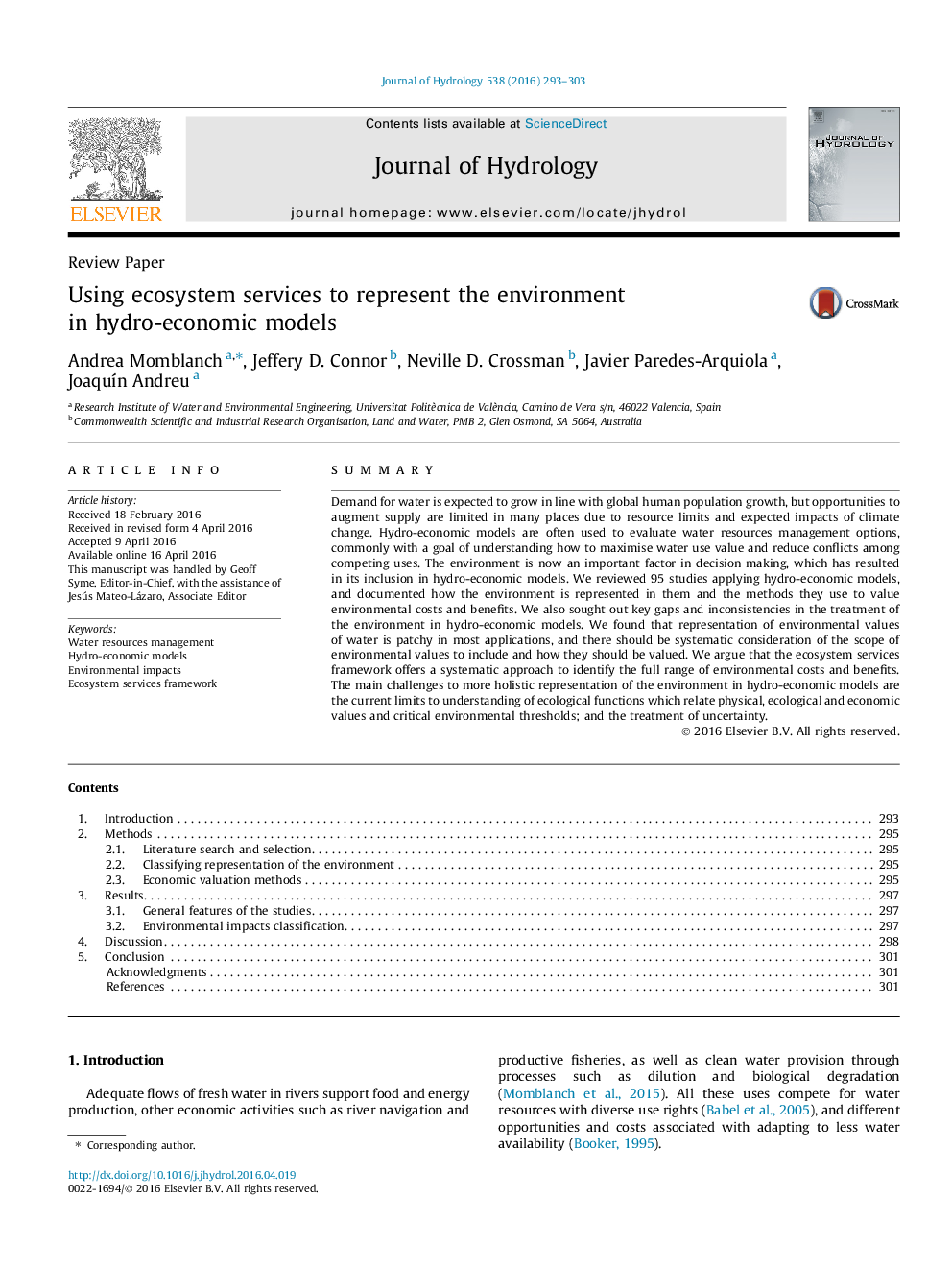| Article ID | Journal | Published Year | Pages | File Type |
|---|---|---|---|---|
| 6409641 | Journal of Hydrology | 2016 | 11 Pages |
â¢Representation of the environment in hydro-economic models (HEMs) is limited.â¢There is no systematic inclusion of the environmental costs and benefits in HEMs.â¢The ecosystem services approach identifies the full range of environmental values.â¢Accurate ecological functions and uncertainty analysis are key challenges for HEMs.
SummaryDemand for water is expected to grow in line with global human population growth, but opportunities to augment supply are limited in many places due to resource limits and expected impacts of climate change. Hydro-economic models are often used to evaluate water resources management options, commonly with a goal of understanding how to maximise water use value and reduce conflicts among competing uses. The environment is now an important factor in decision making, which has resulted in its inclusion in hydro-economic models. We reviewed 95 studies applying hydro-economic models, and documented how the environment is represented in them and the methods they use to value environmental costs and benefits. We also sought out key gaps and inconsistencies in the treatment of the environment in hydro-economic models. We found that representation of environmental values of water is patchy in most applications, and there should be systematic consideration of the scope of environmental values to include and how they should be valued. We argue that the ecosystem services framework offers a systematic approach to identify the full range of environmental costs and benefits. The main challenges to more holistic representation of the environment in hydro-economic models are the current limits to understanding of ecological functions which relate physical, ecological and economic values and critical environmental thresholds; and the treatment of uncertainty.
